5 Tips on Writing: With Ruty Rutenberg
Your Story Skeleton Key: Research, Perspective, Empathy
Greetings!
Ich bin Ruty Rutenberg.
While it’s easier to sum up our characters in 1-Pagers, we often feel as if we’re doing them a disservice, as we know they are so much deeper than that. People are the same. Aren’t you?
Personally, I feel like I’ve lived a dozen lives already. Every time I’m asked, I always get shivers thinking back over the wonderful opportunities and experiences in my career and life I have been gifted. Whether growing up as the son of Air Force officers turned public school teachers, my own experiences in the Army and abroad, and my time in Hollywood or writing and producing for Wizards of the Coast on iconic Dungeons & Dragons worlds and games, and now a decade enjoyed writing for AAA studios, it’s been a wild ride!
But, for that 1-Pager vibe, below is my “short bio” for guest lectures at conventions and events:
With over a decade of experience as a game dev, writer, producer, and consultant, Ruty Rutenberg is known for shepherding IP and leading teams to consistently raise the bar, creating immersive and inclusive stories that resonate with diverse audiences at core emotional levels.
As Narrative Lead at various AAA & Indie studios, he’s managed talented teams of award-winning writers, oversaw narrative vision and execution, and collaborated with various disciplines and stakeholders to ensure the highest quality narrative content.
When not “working,” his efforts go into guiding and amplifying new talented voices in the games industry through speaking engagements, workshops, and mentorship.
One last preface to the following “Tips”: I believe that writing is broken down in the following way, and you’ll see the connections as we answer the following questions.
Breakdown:
Research – 50%
Psychology, Philosophy, Sociology – 30% (in varying quantities)
Wordsmithing (“Writing”) – 5%
Editing/Polishing – 15%
Take note. We’ll be circling back!
Hooking Your Audience
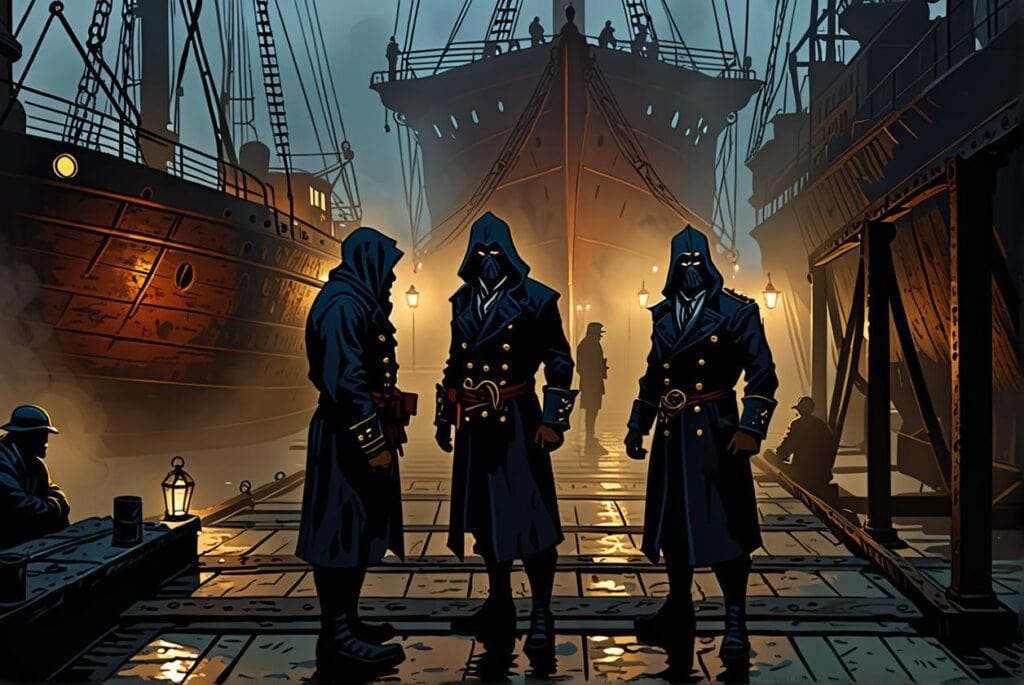
We humans are often complex and range in our proclivities. Yet, one thing that makes us the same… Conflict! We can’t peel our eyes away.
When crafting a scene, the time-honored advice is “Enter as late as possible, Exit as soon as possible.” Why? Because the conflict is the meat (or Beyond Meat for our Veggie friends) of every filling dish. Starting with immediate action, utilizing dialogue and visuals to tell the viewer what they need to know (who/what/where) and why this moment is the biggest (stakes) of the character’s life (and sometimes why it’s trivial to a rival character) informs the audience with that juicy but succinct work on the hook.
Further, action requires confidence to execute well. Paired with perspective, this confidence is often the invaluable show of a writer’s “voice,” which builds a reader’s trust in the creator’s ability to story, meaning the audience will trust that when something seems off or just a little too unbelievable, it’s not a mistake but a motivation.
Your confidence and the audience’s trust are built by (you guessed it!): Research, Perspective, Empathy. It is through these lenses that we are able to fortify the CORE THEME of the story, sometimes often at a subliminal ludonarrative level. While the audience often knows “what I would do” in a given situation, it means that we are able to make them part detective, utilizing what they know to figure out “what will the character do?”
When the audience gets curious, that’s when you know you’ve got them.
Mastering Plot Development
Characters (or their anxieties) in the driver seat! With Character-Driven Plots, we feel that the story is ultimately made to evoke emotional connection. Efficiently defining for the audience a character’s goals (internal & external), obstacles to achieving them (internal & external), and seeding the “will they/won’t they” along the character’s arc will ultimately drive our story’s plot forward without much resistance or fear of losing the audience.
Even when baked in the freedom of a player to create their own character, making the story “about the player,” we must still fill the world with characters central to the plot that will help to define how the player advances through their own story.
When a plot consists only of explosions and universal threats, this puts the agency on the viewer to make up their own version of the story or, worse, the agency to walk away, entirely.
Effective World-Building Strategies
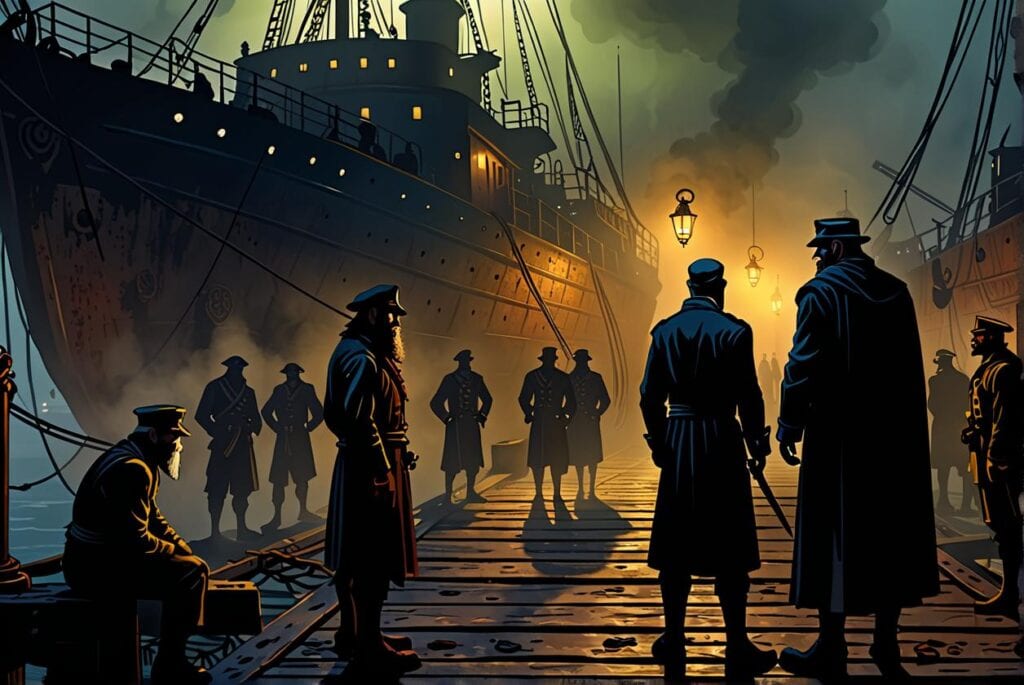
Research! The world IS a main character. Research it just as much, if not more, than those individuals that inhabit that world. Our environments shape up, just like our characters, and so knowing how a character will show up to any given moment means understanding the psychology and perspective gained from their previous experiences in that world.
How do we do that? Just as we establish the meaningful experiences and behavior consistencies for characters, we must create meaningful consistencies for the world. If you fully read my introduction, you’ll have noticed that this is where our efforts establishing the Psychology, Philosophy, and Sociology of the setting in which our stories take place bear fruit.
Establishing the world’s rules, knowing why and how they can be bent, and doing so within a plausible world history, society or culture, and within the economic or political systems characters’ find themselves in the center of, it all starts with research.
NOTE: This marks an appropriate moment to point out that the typical understanding of world-building/research to what the audience sees is usually a 90/10 split.
Take from that what you will.
Bonus Homework: As we’re discussing the Psychology, Philosophy, and Sociology of our world, consider doing a little research on the Buddhist philosophy of The Three Gates to improve your communication skills between your teams. This is what I endeavor to live by, daily.
Techniques for Character Development

Start with their core insecurity, their deepest flaw, their darkest sin. The darker the sin, the juicer the reveal and resolution. Often, in game writing, we already know a lot of “musts” for the characters in design. However, I always try to start with a blank slate and let the roads from a tragic past inform the who, what, where, why, and when of a character’s origins.
Think about that dark secret you hold. The truth that you will do everything to prevent it from coming to light. You know, that secret you keep from your family, closest friends, or even that forever partner. Humans all have this insecurity in common, even the most stalwart knights (think Reinhart). It is a firm starting ground that helps overcome the “Mary Sue” mechanics of our heroes. Protecting that deep seed shades and colors every interaction and justifies emotional choices for a character, presenting a beautiful opportunity to create conflict and, eventually, confidants with ties thicker than blood.
Even when working with my players to create characters for our Dungeons & Dragons campaigns, who start at Level 0 (like any tutorial bound hero) — before we discuss species, class, background– we brainstorm options for that pivotal Dark Night of the Soul in the character’s past. Consider this the entry point for the moment the Zero discovers they are meant to be a Hero (or Villain). Stoking this fire allows for intuitive story hooks and interesting inter-party conflict characters must address…. WITHOUT giving away that secret which would diminish their standing or turn the party against them entirely.
When I want an interesting character ripe for extended development or an impactful cameo, that flaw gives me all the “why” I need and often informs “how” that character views and approaches each new scenario.
Bonus Homework
Bonus Homework: “Litost”
Don’t stop at Google’s “translated definition.” It’s one of those expressions that holds a deeper origin of meaning (and is perfect for character exploration), like Kyouka Suigetsu, Taarradhin, Ailyak or Hintergedanken.
Crafting Meaningful Decisions
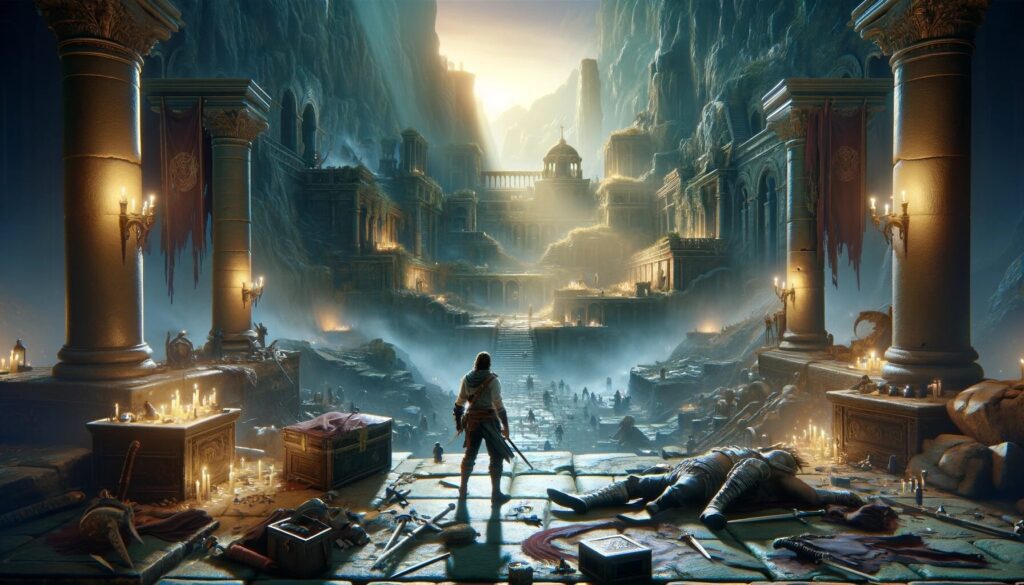
Focus on Empathy, Theme, and Point of View (POV). When we understand the characters’ minds, desires, and fears through the lens of the groundwork we’ve already done in our research and world building (setting psychology, philosophy, sociology) then the audience understands the stakes of each decision.
The higher we raise the stakes through conflict, honed with an understanding of character POV, the more relatable the strife and, thus, the more meaningful each choice.
Once the core theme and stakes are established, we are open to dangle many potential outcomes in front of the character/reader that might solve some problems, but not all, and could open up other future meaningful conflicts along the way.
If the stakes are sky high, even the seemingly trivial choices in the moment become a source of audience (and character) anxiety. Anxiety is how we know it matters. If the choice doesn’t invoke anxiety that waves your first and biggest red flag.
What are your strengths in writing and narrative design?
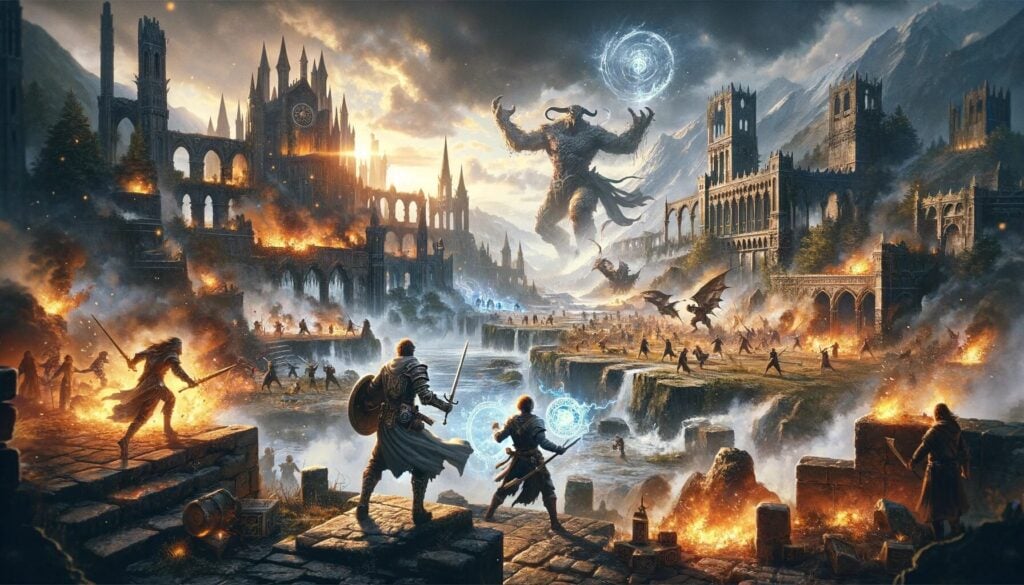
Instead of “Strengths,” we’ll let “Focus” stand-in.
My focus as a Narrative? Communication, Connectivity, Curiosity, Inclusivity.
Narrative Design is a discipline most closely aligned to management or leadership than most people (including Leadership) often realize. We aren’t just writers nor are we just designers. We are holistic, big-picture, folk with an obsession for detail – not just of the story but within the studio.
Narrative Designers gain the most velocity when they understand the duties and tools of other disciplines, what resources and how long tasks might take, and the greater impact choices mean to the game’s connectivity with fans. When we understand, not just environmental storytelling but Level Design, we are better equipped to negotiate the Scope of any given ask. To that end, a good Narrative Producer can be invaluable. And, when there isn’t one prioritized for the Narrative team, the ND must carry that mantle, too.
I often relay the Narrative Department’s role within a studio to that of the anatomy of an umbrella. Seems silly, right? Let’s open’er up!
It’s probably somewhat intuitive to look at a Studio or Game’s structure through the anatomy of an umbrella. There’s tons of cohesive moving parts that can be paralleled to various intricacies of each job, but we’d be here all day going through the springs and clips.
For now, let’s imagine the ferrule (top cap) to be the Game Director and each tip to be a studio discipline, which must maintain constant connection via stretcher to a central point in order to raise the canopy (ship the game). That point is called the runner.
A good Narrative Designer is that runner, constantly acting as a central hub of awareness, knowledge, and connectivity that helps the canopy to open. Should the ND/Runner disconnect from any tip, or fail to keep them all in step, the canopy is ineffective and the project runs the risk of being sodden or left in some waste bin, all its potential and purpose forgotten in obscurity.
That runner analogy requires constant connectivity, rapid communication, unquenchable curiosity, and studio-wide inclusivity to properly fulfill its role in the opening of our metaphorical game of umbrella.
Freebee: Writers/ND’s are known for seeing the problems with particular elements before they unfold. In an effort to better serve your compatriots, learn to channel the frustration with various elements into opportunities. Bring helpful solutions (minimum of 3) complete with the reverberations those pivots might have for other elements of the project. We never know when an offering might turn into a wonderful spark of team creativity!
Which games or stories have you worked on?
Ooo! A great opportunity to practice that Research pillar I mentioned to kick in!
Exploring Favorites
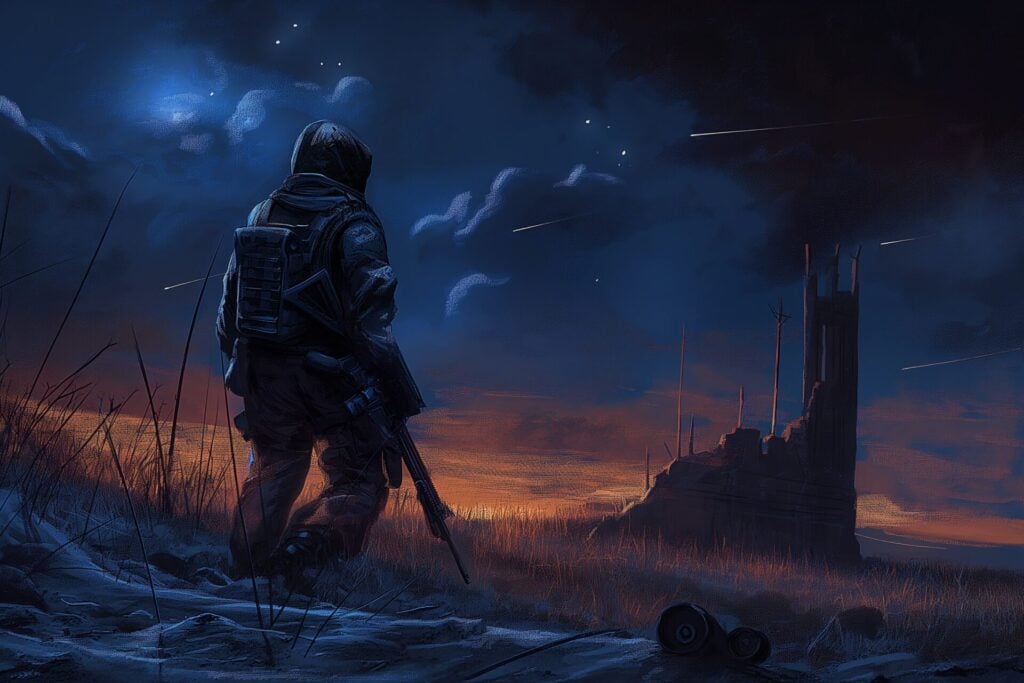
Joe Abercrombie’s First Law series… from start to finish, “standalones” included, in order. Joe’s writing is a masterclass on every question we’ve covered here today about plot mechanics, worldbuilding, and character development, especially.
There are no clear heroes or villains but relatable individuals who find themselves in extreme, and often painful, scenarios where the “right” answer is at best a trade-off, and often flat out detrimental to all involved.
How? The series’ books are written in Third-Person Limited format, meaning that each POV character shares observations and insights specific to their philosophy of the world based on their sociological background and the psychology it bore.
My preferred medium for Joe’s books are on Audible. Steven Pacey’s narration and character work is beyond comparison. He’s on my list of Voice Over actors to work with one day.
A Wish for Interactive Audio Stories
Ooo! Great question. For that, I’d need you to sign an NDA. I guess you’ll just have to wait and see 😉
However, I’ll take this moment to thank you for coming to my Twisted Tales Talk and to the incredible folks over at Twisted Tales/EarReality for creating this incredible platform as a resource and stage for budding new storytellers! Feel free to connect with me on LinkedIn.
As you might have noted, I am an active mentor and amplifier in the games’ community. Was this helpful to you? Do you have questions to clarify? Drop me a line!
I also want to take the opportunity to give you a short-list of other great resources andf LinkedIn friends to help in your hunt.
Recommended Reading for Game Writing?
Narrative: D&D’s Dungeon Master’s Guide, The Game Narrative Toolbox, Dramatic Storytelling & Narrative Design, Writing Fantasy & Science Fiction, Video Game Storytelling, Save the Cat
Professional: 6 Working Genius, The 5 Dysfunctions of a Team, Nonviolent Communication, Herding Tigers, Five Temptations of a CEO (for a little empathy), “Silos, Politics, and Turf Wars”
How do I get experience if no one will give me a job?
Game Jams, Tabletop, aaand… EarReality!
Narrative Theory & Portfolio support
Job Search & Layoff support
In closing, it is my sincere desire that my ramblings will be of service to you, the next class of Game Writers and Narrative Designers, who will one day lift the mantle from my shoulders and usher in a new age for the games industry.
Warmest Hearths to you and yours,
Ruty
Register for our Free Writing Workshop now!
If you are interested in creating your own interactive audio story, you can apply for our free webinar! It will introduce you to our interactive story game engine, TWIST, and teach you how to use it to create interactive audio stories.
Interested in contributing to our blog series?
If you would also like to publish a blog post on our website and share your own story with interested readers, simply fill out the contact form.





